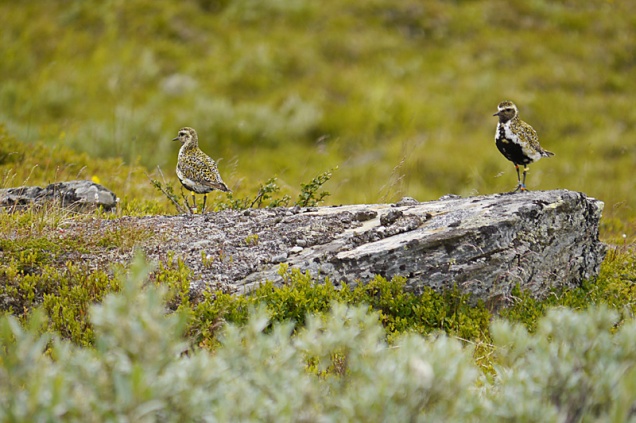The European Golden Plover is a medium-sized wader that breeds all over northern Europe in various types of grassland and heathland habitats. Its breeding distribution spread out from the very eastern part of Greenland, over Iceland and across much of Northern Europe, including the British Isles and Scandinavia to Taimyr Peninsula in Siberia, with the large majority breeding on mountain heaths and arctic tundra in northernmost Europe.
In Sweden Golden Plovers breed throughout the country in suitable habitats, but the large majority (> 95 % of the national population of 110 000 pairs) are breeding in the northern mountain regions. At these latitudes, unlike in temperate areas, there is continuous day-light throughout most of the breeding period and the breeding schedule is reduced to a little bit more than two months (end of May – mid of August), varying somewhat between years as there are big differences in snow cover and therefore in the onset of breeding.

Our study area holds good numbers of breeding Golden Plovers, being the most common wader species in the area (Raurejaure), with 80 – 100 breeding pairs (6 – 8 pairs per Km2). Since the field season 2011 we started to get into more detailed studies about the effects of territory quality on breeding success on the European Golden Plover, relating food availability with habitat selection and describing development of chicks, diet and predation pressure, including chick survival. Another part of the project includes studies about how breeding and migratory performance affect each other.